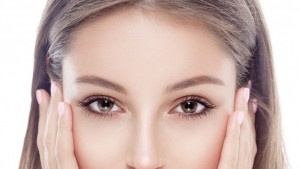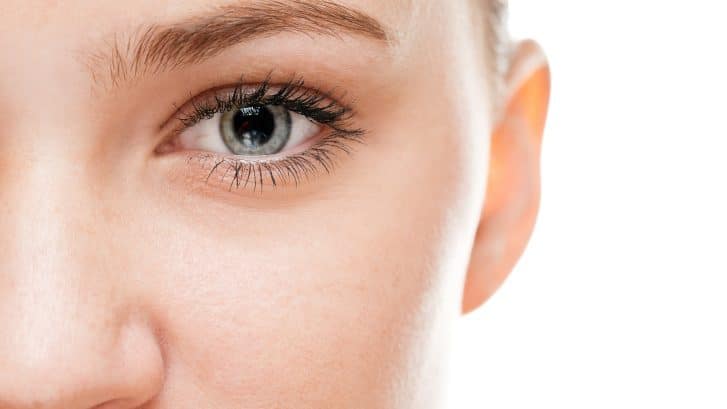Eyelid Surgery Los Angeles (Blepharoplasty)
 There’s a reason eye contact is so important. Eyes are our most expressive features. Unfortunately, they’re also one the first features to show signs of aging. As we age, eyelid skin stretches, fat bulges, and muscles weaken, resulting in puffiness, bags under the eyes, droopiness of the upper eyelids, wrinkling, and discoloration of the thin skin around the eye. This can make us look tired, sad, and older than we feel.
There’s a reason eye contact is so important. Eyes are our most expressive features. Unfortunately, they’re also one the first features to show signs of aging. As we age, eyelid skin stretches, fat bulges, and muscles weaken, resulting in puffiness, bags under the eyes, droopiness of the upper eyelids, wrinkling, and discoloration of the thin skin around the eye. This can make us look tired, sad, and older than we feel.
While these signs of aging become most apparent as one reaches their late thirties to early forties, hereditary characteristics like fatty deposits and discoloration may appear as early as the mid-twenties. Appearance of these signs can be accelerated by factors like sun exposure, high alcohol intake, smoking, drug abuse, poor diet, hormone imbalances, and poor health.
Fortunately, new techniques and advances in eyelid surgery like those used by double board certified surgeon Dr. William J. Binder offer solutions to these issues with quicker recovery than ever before. Aesthetic eyelid surgery, or blepharoplasty, has a high rate of satisfaction among both women and, increasingly, men, who make up a quarter of the population seeking eyelid surgery. Other procedures such as brow and forehead lifts, rhinoplasty, cheek implants, facial sculpturing, chemical peels, and facelifts may be performed simultaneously with blepharoplasty.
Blepharoplasty can be performed on the upper and lower eyelids separately or both at the same time. The procedure removes excess or wrinkled skin and protruding fat, opening up the eyes to give the face a more youthful appearance. The procedure may also be necessary to correct overhanging skin that affect the field of vision.
Incisions are made in the natural skin folds of the eyelids, making them virtually unnoticeable after healing. Blepharoplasty is usually an outpatient procedure and can be performed under I.V. sedation or light general anesthesia depending on the complexity of the procedure.
While puffiness in the lower eyelids can be caused by accumulated fluid under the skin, it is usually caused by excessive fatty deposits protruding through the lower eyelid. These deposits can be made worse by allergies and fluid retention. Dark circles are often caused by shadows cast by fatty deposits as well as discoloration of the skin. Lower eyelid blepharoplasty can rectify these problems through several techniques.
How is Lower Blepharoplasty Performed?
Patients with fatty pockets below the eyes but no excess skin may have these deposits moved from inside or behind the lower eyelid (transconjunctival blepharoplasty), avoiding an external scare. This technique involves making a small incision on the inside of the lower eyelid, where fatty tissue is removed. This excellent technique sees particularly good results from younger patients with good skin and few wrinkles. Patients with genetic bags may be candidates for this procedure as early as in their mid twenties.
When bags are present with only a small amount of excess skin, a pinch technique can be used with transconjunctival blepharoplasty. This technique removes the excess skin by pinching it under the margin of the lower eyelid and trimming the excess. The incision for this technique heals almost invisibly.
In cases where there is excessive fine wrinkling or discoloration in the lower eyelid, a chemical peel, or, for deeper lines, laser resurfacing can also be performed in conjunction with or after the surgery.
Before the transconjunctival approach to blepharoplasty, external incisions under the eyelid were the standard approach to eyelid surgery. While a transconjunctival approach is now preferred, it will not treat significant excess skin with severe wrinkling, and an external approach is required. An incision is made at the lower eyelid crease and, if necessary, carried out into the creases of crow’s feet. This leaves a fine scar that is almost invisible when healed.
In conjunction with external incision blepharoplasty, Dr. Binder uses supporting canthoplasty, a procedure performed to help support the lower eyelid by repositioning and reattaching the corner of the eyelid back to the orbital bone, strengthening the lower lid. Once this is done, excess skin can be safely removed and deep creases smoothed out. A chemical peel or laser resurfacing can also be performed simultaneously.
There are other eyelid conditions that, because of their severe nature. require a more reconstructive surgical approach. These include the drooping of the lower lid (called “retraction” or “ectropion”), sagging of the skin and muscle of the lower lid and upper cheek (“festoons), and tear trough deformity, a hollow under the eye starting at the corner of the eyelid and descending to where the thin under eye skin meets the thicker cheek skin. In these cases, Dr. Binder uses a variety of techniques to shape and balance the upper portion of the face. These can include a canthoplasty, eyelid muscle suspension, a lift of the upper midface, and, in severe cases, grafting techniques.
“Hollowed-out” eyes have also received lots of attention recently among patients who had prior blepharoplasty and had too much fat removed or simply among those with extremely prominent orbital bones leading to a sunken look. Several new procedures have been introduced to treat these conditions by fat transposition, fat injection, and the use of fillers. In some cases, small amounts of fat may be removed and transposed into the sunken area to create the smoothest possible transition between the eyelid and cheek. This can be performed with either a transconjunctival or external approach. To fill hollows after surgery or without surgery, Dr. Binder uses either Restylane® or Juvederm fillers, which over his 30 years of experience in the field he has found to work extremely well, requiring treatments only once per year.
Upper eyelid blepharoplasty removes the excessive skin (such as that which obstructs vision), muscle folds, and fatty bags usually found in the inner corner of the eye. Incisions are made in the upper eyelids following natural creases. In cases where vision is obstructed, a forehead or brow lift is performed in conjunction with the blepharoplasty. If necessary, incisions will extend into the fine squint lines, or crow’s feet, at the outer edges of the eyes. While crow’s feet are generally not improved by this procedure, the use of Botox® has been successful in solving this problem. Careful closure uses extremely fine stitches which are removed within three to four days. Hairline scars fade with healing, leaving only a very inconspicuous line that quickly becomes virtually unnoticeable.
Recovery after routine upper or lower eyelid surgery is quite rapid. Patients experience surprisingly little discomfort, bruising or swelling, most of which usually subsides within a few days to one week. Most sutures dissolve and the rest are removed 4- 5days after surgery. Make-up can be applied shortly thereafter — in most cases, in about 10 days. If the lower blepharoplasty is performed from behind the eyelid (the transconjunctival approach), the sutures are self-absorbing and do not have to be removed. Infrequently, some patients may experience tearing or dryness that usually resolves within the first few weeks after surgery. Actors, models and others who appear in the public eye can resume camera appearances a few weeks after surgery.
There’s no reason to live with excessive sagging and wrinkles around your eyes, making your face look old while you feel young. Make your face match your attitude by calling the surgeon with 30 years of experience, double board certified William J. Binder. Join his many satisfied patients and feel great in your skin.

